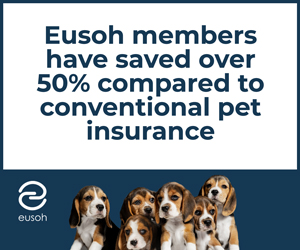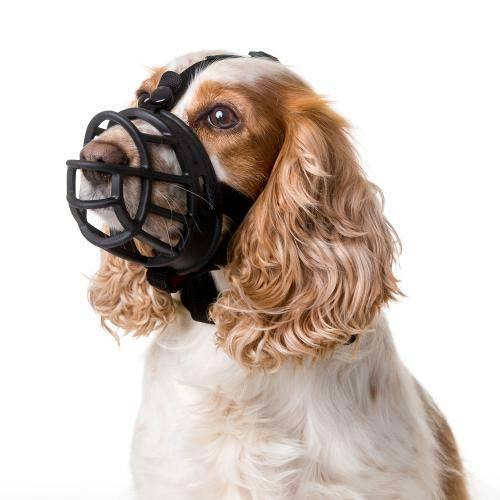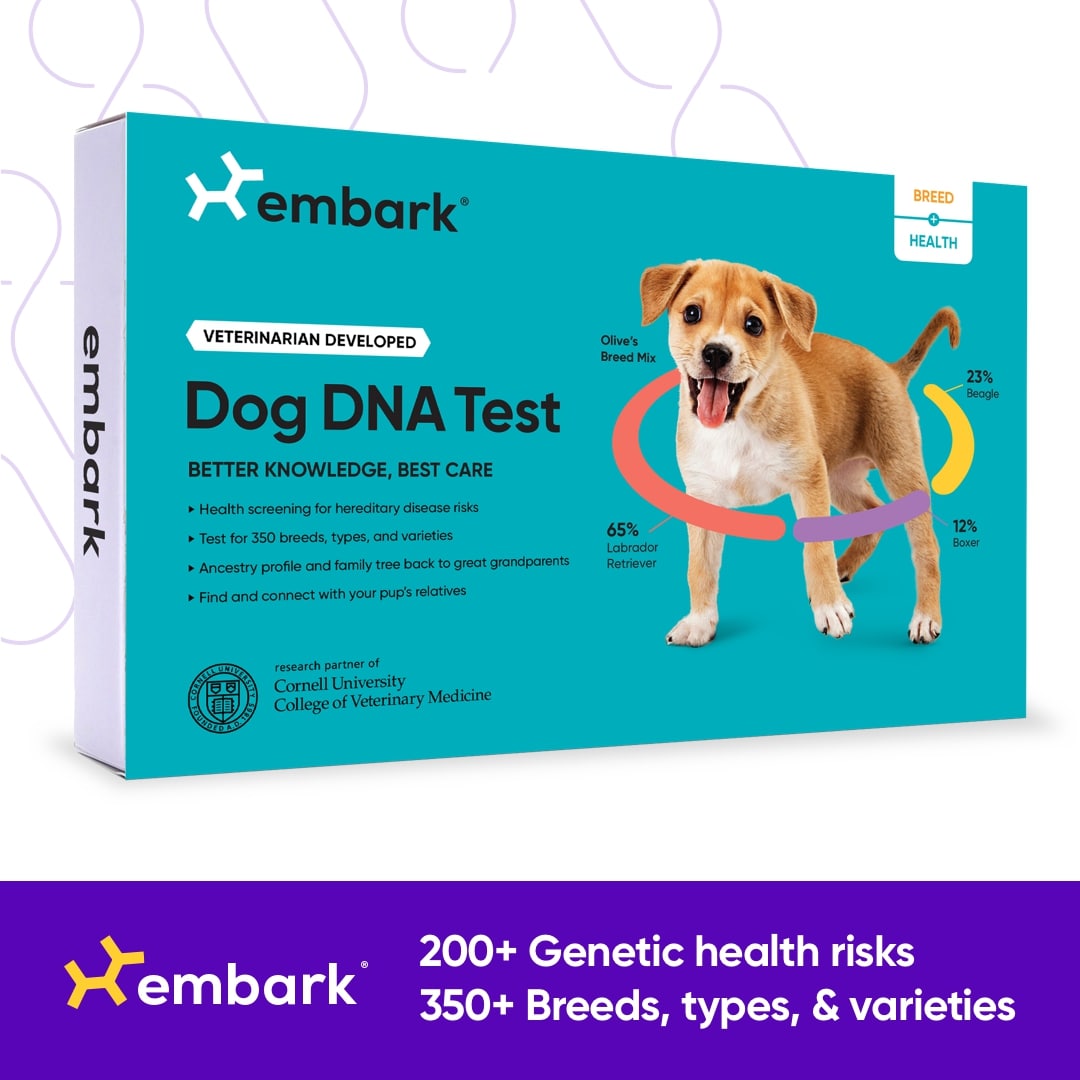Understanding Aggression
Aggression is the most common and most serious behavior problem in dogs. It’s also the number-one reason why pet parents seek professional help from behaviorists, trainers and veterinarians. Aggression can be classified into aggression against people and aggression towards other dogs and can encompass a wide variety of behaviors. Virtually all wild animals are aggressive when guarding their territories, defending their offspring and protecting themselves. Species that live in groups, including people and dogs, also use aggression and the threat of aggression to keep the peace and to negotiate social interactions.
Aggression encompasses a range of behaviors that usually begins with warnings and can culminate in an attack. Dogs may abort their efforts at any point during an aggressive encounter. A dog that shows aggression to people usually exhibits some part of the following sequence of increasingly intense behaviors:
- Becoming very still and rigid
- Guttural bark that sounds threatening
- Lunging forward or charging at the person with no contact
- Mouthing, as though to move or control the person, without applying significant pressure
- "Muzzle punch" (the dog literally punches the person with her nose)
- Growl
- Showing teeth
- Snarl (a combination of growling and showing teeth)
- Snap
- Quick nip that leaves no mark
- Quick bite that tears the skin
- Bite with enough pressure to cause a bruise
- Bite that causes puncture wounds
- Repeated bites in rapid succession
- Bite and shake
Dogs don’t always follow this sequence, and they often do several of the behaviors above at the same time. Often, owners don’t recognize the warning signs before a bite, so they perceive their dogs as suddenly flying off the handle. That’s rarely the case. It can be just milliseconds between a warning and a bite, but dogs rarely bite without giving some type of warning beforehand and they also do not bite without a reason...
Some dogs become aggressive out of fear, in fact most do. When we think of an aggressive dog we assume the dog is confident and 'in your face' but that's not always true. Some of the most dangerous aggressive dogs are dogs that are shy or fearful. A confident dog rarely bites. A confident dog gives ample warning signals and will do anything to avoid a confrontation. However shy dogs tend to attack because they are fearful of being attacked.
The point is, if you have an aggressive dog, you should probably be doing everything you can to increase their confidence and security. This somehow seems counterintuitative but, like I said, most aggressive dogs are insecure and shy, which is why they threaten and bite. The exception here is a dog that was 'taught' to be aggressive through training or some kind of behavior modification (intentionally or otherwise). Those are truly difficult cases and need a professional evaluation. That said, there are the types of aggression that historically was EXPECTED from dogs. Unfortunately, society is changing and dogs are no longer allowed to be anything except constantly accepting and gracious, even when abused. It's a sad state of affairs.
Territorial Aggression
Dogs’ wild relatives are territorial. They live in certain area, and they defend this area Wolves and coyotes are highly territorial. Dogs are often valued for this level of territorial behavior and in the past it was accepted as how "certain dogs were". Territorial aggression is when this protectiveness gets out of control. Some dogs show aggression at their property boundaries. While others show territorial aggression only toward people or other animals coming into the home. Male and female dogs are equally prone to territorial aggression. Puppies are rarely territorial. Territorial behavior usually appears as puppies mature into adolescence or adulthood, at one to three years of age.
Protective Aggression
Dogs are a social species. If they were left on their own, they would live together in packs of family and friends. If one member of a pack is in danger, the others typically rush in to help defend that individual. This is classified as protective aggression because the dogs are protecting one of their own. Our dogs may show this same aggressive behavior when they think that one of their family members or friends (human or animal) is in danger. Sometimes dogs reserve protective aggression for individuals they consider particularly vulnerable. A dog who has never shown aggression to strangers in the past might start behaving aggressively when she has a litter of puppies. A dog might first show protective aggression when her owners bring a human child into the family. Both male and female dogs are equally prone to protective aggression. Puppies are rarely protective. Like territorial behavior, protective aggression usually appears as puppies mature into an adolescence or adulthood, at one to three years of age.
Possessive Aggression
Dogs evolved from wild ancestors who had to compete for food, nesting sites and mates to survive. Some dogs react aggressively when a person or another animal comes near their food bowl or approaches them while they’re eating. Other dogs guard their chew bones, their toys or things they’ve stolen. Still others guard their favorite resting spots, their crates or their beds. Less common are dogs who guard water bowls. Usually a possessive dog is easy to identify because she’s only aggressive when she has something she covets. Male and female dogs are equally prone to possessive aggression.
Fear Aggression
When animals and people are afraid of something, they prefer to get away from that thing. This is called the flight response. But if escaping isn’t an option, most animals will switch to a fight response. They try to defend themselves from the scary thing. A fearful dog will normally adopt fearful postures and retreat, but she may become aggressive if cornered or trapped. Fearful dogs sometimes run away from a person or animal who frightens them, but if the person or animal turns to leave, they come up from behind and nip. Fear aggression is characterized by rapid nips or bites because a fearful dog is motivated to bite and then run away. With fear aggression there isn't always a clear threat. A fearful dog might not show her teeth or growl to warn the victim off and an attack can seem 'out of the blue' or uncharacteristic since the dog is sweet and loving most of the time.
Defensive Aggression
Closely related to fear aggression is defensive aggression. The primary difference is the strategy adopted by the dog. Defensively aggressive dogs are still motivated by fear, but instead of trying to retreat, they decide that the best defense is a good offense. Dogs who are defensively aggressive exhibit a mixture of fearful and offensive postures. Regardless of whether the victim freezes or advances, the defensively aggressive dog often delivers the first strike.
Dominance Aggression
Animals who live in social groups, like people and dogs, typically live by certain rules in order to minimize conflict between group members. These ordered relationships are frequently reinforced by displays of ritualized aggression - the casual upturned lip, or low growl means nothing more than "back off" to another dog or human that understands what they are saying. Individuals of high status use aggressive threats to remind the others of their place in the pack. The relationships between people and dogs who live together are certainly more complex than this simplified description, but it’s still important to know that a dog who perceives herself as high in status may show aggression toward family members, particularly children. This is why a dog might be perfectly trustworthy with one owner but react aggressively toward the other or toward young children in the family. Such dogs are typically happy-go-lucky, friendly dogs most of the time. But if they feel that someone in the pack has overstepped his or her bounds, these dogs might quickly become aggressive. Some of the triggers include:
- Taking food away
- Taking a chew bone, toy or stolen object away
- Disturbing the dog while she’s sleeping
- Physically moving the dog while she’s resting
- Hugging or kissing the dog
- Bending or reaching over the dog
- Manipulating the dog into a submissive posture
- Lifting or trying to pick up the dog
- Holding the dog back from something she wants
- Grooming, bathing, towelling or wiping the dog’s face
- Touching the dog’s ears or feet
- Trimming the dog’s nails
- Jerking or pulling on the dog’s leash, grabbing her collar or putting on a harness
- Verbally scolding the dog
- Threatening the dog with a pointed finger or rolled-up newspaper
- Hitting or trying to hit the dog
- Going through a door at same time as the dog or bumping into the dog
Frustration-Elicited Aggression
Dogs can be like human children in that when they get frustrated, they sometimes lash out with aggression at the nearest victim. A dog who’s excited or aroused by something but is held back from approaching it can become aggressive, particularly toward the person or thing holding her back. A frustrated dog might turn around and bite at the leash or person holding the leash. Some dogs will develope this aggression when chained up outside. They'll see a squirrel and run for it only to be yanked back by the chain. This creates frustration and sometimes aggression from being on a chain. This explains why some normally friendly dogs become aggressive when put behind a gate, in a cage or crate, in a car, or on a chain.
Redirected Aggression
Redirected aggression is a lot like frustration-elicited aggression with the exception that the dog need not be frustrated. Redirected aggression occurs when a dog is aroused by or displays aggression toward a person or animal, and someone else interferes. The dog redirects her aggression from the source that triggered it to the person or animal who has interfered. This is why people are often bitten when they try to break up dog fights. Another example is when two dogs are barking at something behind a fence. Sometimes one will turn and attack the other.
Pain-Elicited Aggression
An otherwise gentle, friendly dog can behave aggressively when in pain. That’s why it’s so crucial to take precautions when handling an injured dog, even if it's your own. A dog with a painful orthopedic condition or an infection might bite with little warning, even if the reason you’re touching her is to treat her. The improper use of certain pieces of training equipment, such as the pinch (or prong) collar or the shock collar, can inflict pain on a dog and prompt a pain-elicited bite as well. One of the reasons we do not recommend using these types of collars.
Sex-Related Aggression
Even though pet dogs rarely have the opportunity to reproduce, intact male dogs will still vie for the attention of females in heat, and females will still compete for access to a male. Intact male dogs sometimes challenge and fight with other male dogs, even when no females are present. Fighting can also erupt between dogs living together in the same household. Females living together in the same household might compete to establish which female gets access to a male for breeding. This type of aggression is not very common since most pets are spayed/neutered unless in a breeding situation. Dogs who were neutered or spayed as adults may also show this type of aggression - even to the opposite sex if de-sexed.
Predatory Aggression
Most dogs except a few breeds have been bred to remove their predatory aggression - a leftover from when they were more closely related to wolves. Some of these traits were redirected - such as herding dogs that love to chase moving people or animals. Most dogs have had the desire to kill things they chase bred out of them, so it's just the chase. However, some of the more primitive breeds still might want to chase and kill squirrels, rabbits, and other small animals (including dogs) they encounter. Some will even chase wildlife and livestock. Some dogs bite and even kill if they manage to catch the thing they’re chasing. Predatory aggression is very different from other classifications of aggression because there’s rarely any warning before an attack. A predatory dog doesn’t growl or show her teeth first to warn her victim, so predatory aggression can seem to come out of the blue. Predatory behavior can be especially disturbing if it’s directed toward a human baby if the baby is crying or certain movements trigger reaction from a predatory dog. Fortunately, predatory aggression directed toward people is extremely rare in most pet dogs.
Family Members, Strangers or Other Animals
It’s common for dogs to behave aggressively toward unfamiliar people and as many as 60 to 70% of all pet dogs bark threateningly at strangers and act unfriendly when around them. Aggression toward unfamiliar dogs is also common. It’s less common for dogs to direct aggression toward family members or other pets in the home - in other words, their pack. Aggression toward children exceedingly difficult to treat because of safety concerns, the likelihood that a dog with this problem will ever become trustworthy difficult to say.
A dog might be aggressive only with the veterinarian or groomer, or with the postal carrier, or people of a certain race, or that are wearing hats or beards. Usually it's easy enough to limit a dog’s access to the people that upset her.
Aggression toward people, aggression toward dogs and aggression toward other animals are independent patterns of behavior. If your dog is aggressive toward other dogs, for example, that doesn’t mean she’s any more or less likely to be aggressive toward people. So what to do? If you consult a behaviorist they will consider the type of aggression, the dog's breed and size, severity, how often the aggression happens and your ability to keep the dog away from the targets of her aggression. Most of all the behaviorist will concentrate on the triggers that prompt your dog to behave aggressively and use various methods (above) to desensitize and redirect the behavior.
AGGRESSIVE DOG BOOKS


















